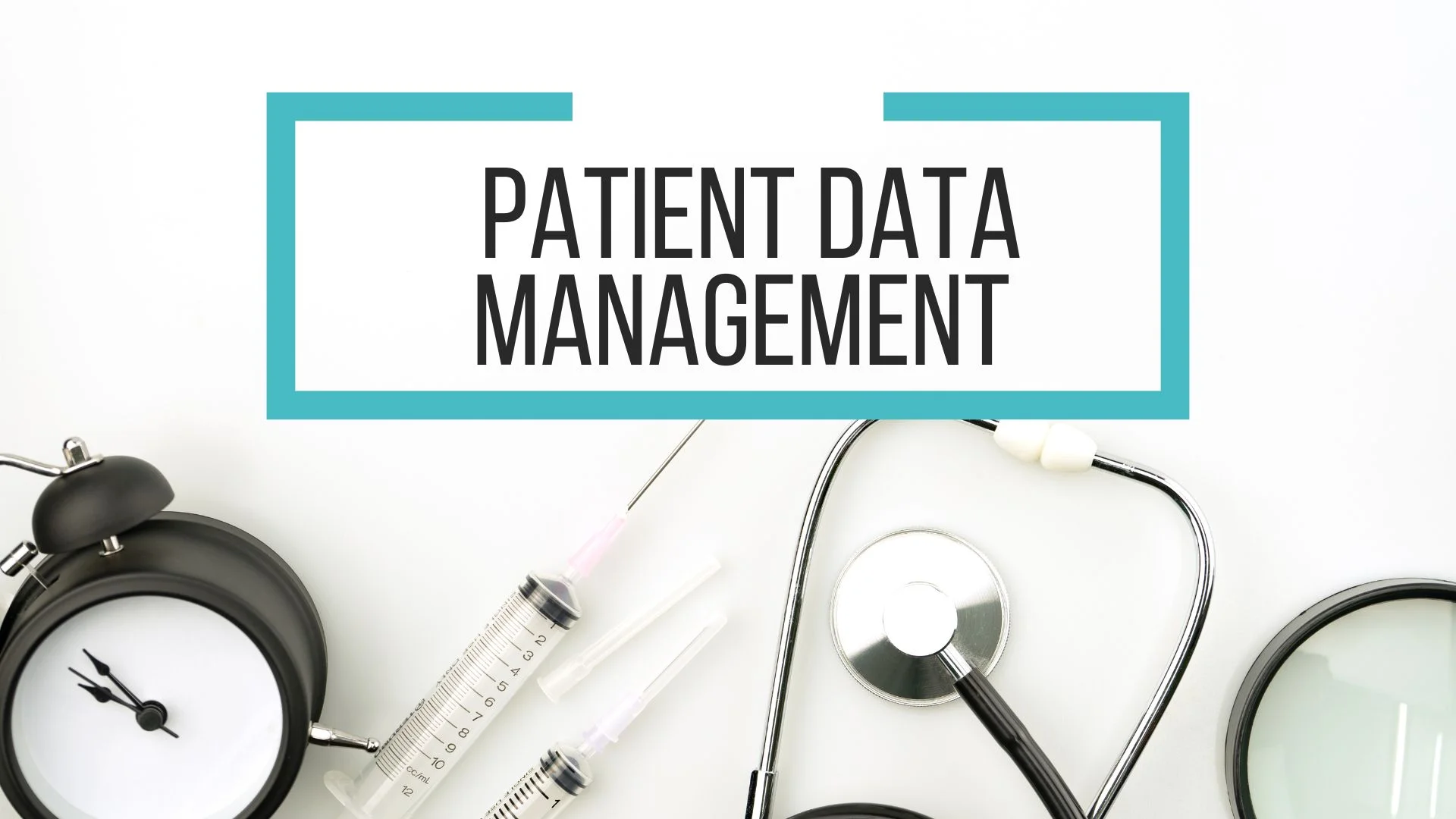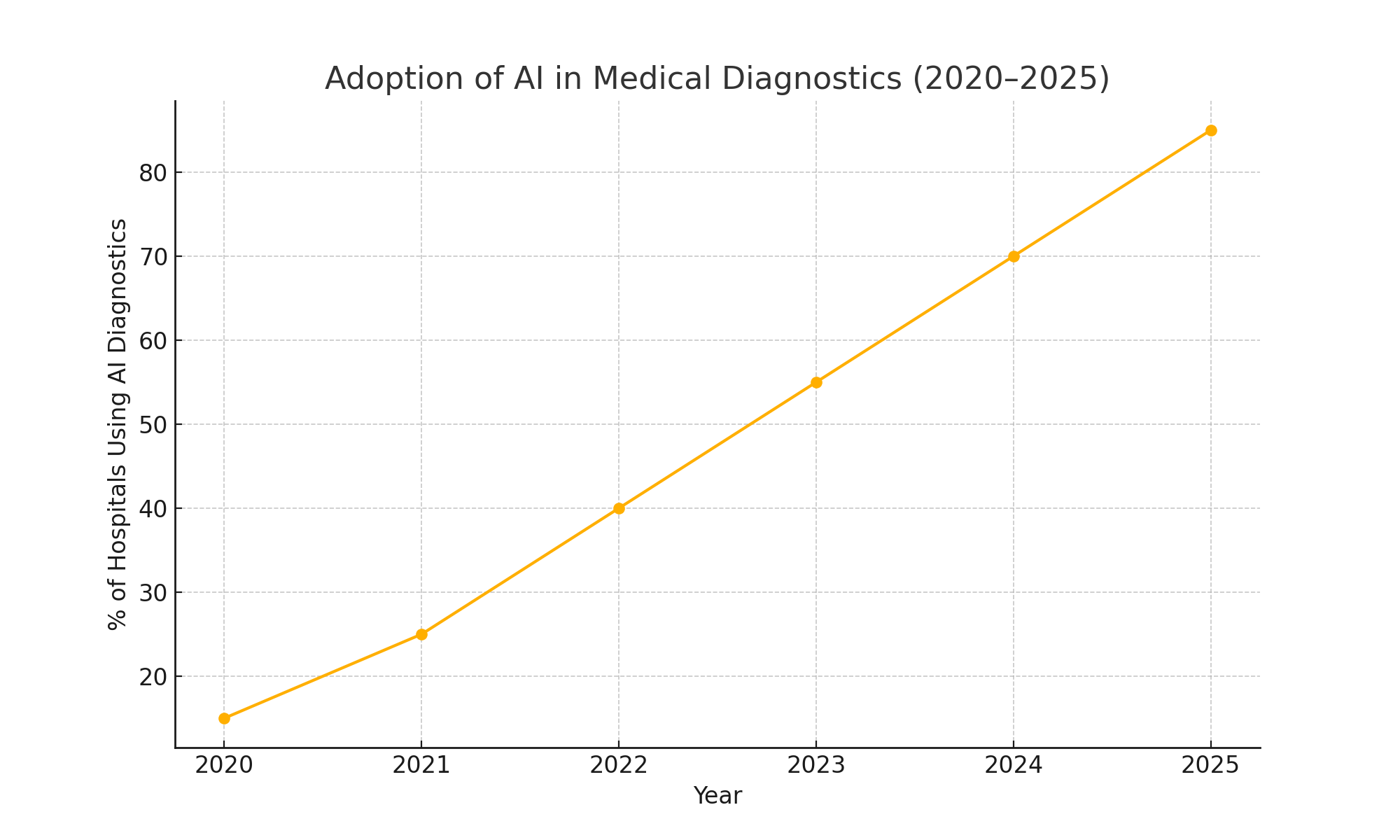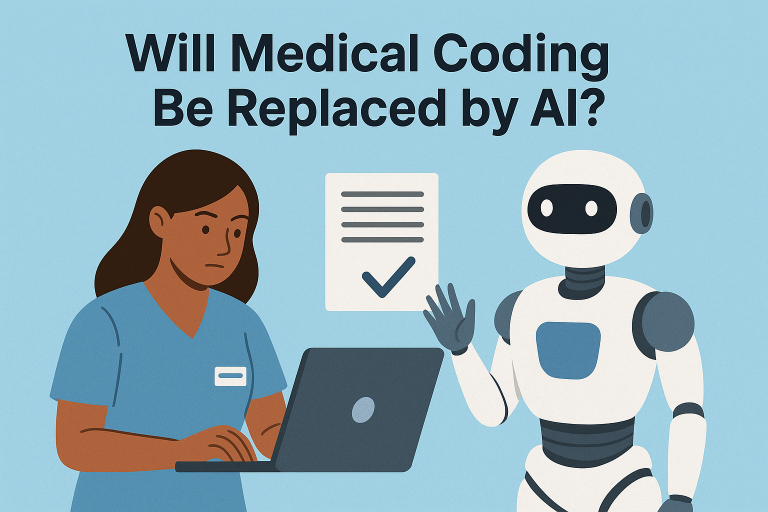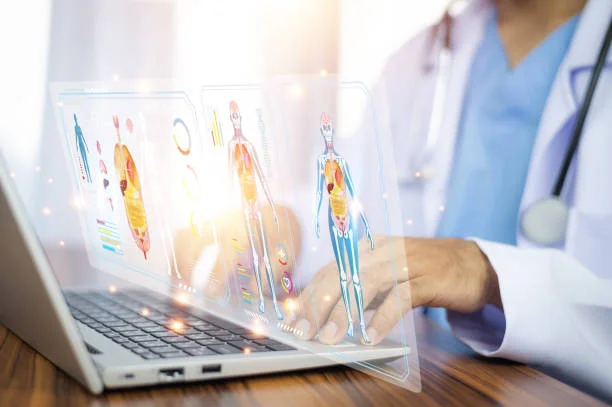AI in Healthcare Automation Key Trends Shaping the Industry in 2025

Artificial Intelligence (AI) is no longer a buzzword in the healthcare industry. It’s a driving force behind transformation. From streamlining administrative workflows to enhancing diagnostics and even predicting patient outcomes, AI in healthcare automation is shaping the future of medical systems around the world. A series of breakthrough trends is not only redefining how care is delivered but also making it more personalized, efficient, and scalable.
Intelligent Patient Data Management

Handling vast volumes of patient records has long been a challenge for healthcare providers. In 2025, AI-powered Electronic Health Record (EHR) systems will enable smarter data collection, organization, and analysis. These systems don’t just store information; they learn from it. AI algorithms can now flag abnormal patterns, identify early signs of disease from longitudinal health records, and offer clinical decision support that helps doctors intervene before a condition worsens. This reduces errors, cuts down manual effort, and significantly improves patient safety.
Automated Diagnostics and Imaging Interpretation

One of the most impactful uses of AI in healthcare automation is in medical imaging and diagnostics. AI models trained on millions of scans are now outperforming human radiologists in detecting certain abnormalities such as tumors, microfractures, and neurological disorders. In 2025, AI doesn’t just support doctors, it collaborates with them. These tools can interpret X-rays, CT scans, MRIs, and even pathology slides with exceptional speed and precision. This allows physicians to make faster decisions, particularly in time-sensitive scenarios like stroke or cancer diagnosis.
Predictive Analytics and Early Disease Detection
AI’s ability to analyze massive datasets makes it ideal for predictive modeling. By evaluating a person’s genetic makeup, lifestyle factors, historical records, and current vitals, AI can accurately forecast potential health risks. Many healthcare institutions are leveraging AI to create personalized health predictions, from anticipating heart attacks to detecting diabetic complications before they manifest. This proactive approach leads to preventive care, reducing hospital admissions and improving long-term outcomes.
Virtual Health Assistants and Chatbots
With the rise of telehealth, AI-powered virtual assistants are becoming indispensable. In 2025, these intelligent bots are capable of doing more than just booking appointments or answering FAQs. They now collect symptoms, assess patient urgency, and even provide follow-up care instructions post-treatment. Their integration with patient portals ensures round-the-clock availability, increasing patient engagement and satisfaction. For healthcare providers, this also means fewer incoming calls and better workflow efficiency.
Automation in Clinical Workflow and Administrative Tasks
Healthcare professionals often face burnout due to excessive administrative duties. AI is stepping in to automate routine tasks such as billing, claim processing, appointment scheduling, and transcriptions. Hospitals are using Robotic Process Automation (RPA) combined with AI to handle repetitive operations, ensuring accuracy and speed. This allows medical staff to focus on what truly matters, patient care, instead of drowning in paperwork.
AI in Drug Discovery and Clinical Trials
Pharmaceutical innovation is another field where AI automation is revolutionizing outcomes. The traditional drug development pipeline is slow and costly. However, AI is significantly shortening this process by simulating drug interactions, analyzing molecular properties, and predicting side effects before clinical testing begins. AI is also matching the right patients to clinical trials, based on genetic profiles and disease history, enhancing recruitment efficiency and success rates.
Personalized Treatment Plans Through AI Algorithms
No two patients are the same, and AI has made personalized medicine more achievable than ever. Using advanced machine learning models, doctors can now create customized treatment strategies that take into account an individual’s unique biological, environmental, and lifestyle factors. AI analyzes real-time health data collected from wearable devices or home monitors and adjusts treatment regimens dynamically. This precision healthcare model leads to improved recovery rates and minimal adverse effects.
Enhanced Robotic Surgery and AI-Guided Procedures
Robotic surgeries have been around for a while, but with the help of AI, they have become more precise and autonomous. AI-integrated surgical robots are capable of assisting in complex procedures such as cardiac bypass or organ transplants by guiding the surgeon’s hands or even executing minor tasks independently. These robots analyze pre-operative scans, adjust to real-time feedback, and minimize human error, leading to faster recovery times and less invasive operations.
AI-Driven Public Health Surveillance
Tracking disease outbreaks and managing public health crises has taken on new importance after the COVID-19 pandemic. Today, AI algorithms are being deployed for real-time public health monitoring. These systems analyze search engine trends, social media activity, wearable device data, and hospital reports to forecast disease spread and outbreak hotspots. This proactive surveillance is key to mitigating epidemics before they spiral out of control, saving lives and reducing the economic burden.
Ethical AI and Data Privacy in Healthcare
As AI becomes deeply entrenched in healthcare, ethical concerns around patient data privacy, algorithm bias, and decision transparency have grown. In 2025, governments and regulatory bodies are actively enforcing AI governance frameworks. Hospitals are adopting explainable AI models, ensuring that healthcare providers and patients understand how decisions are made. There is also an increasing emphasis on data anonymization and secure data handling, striking a balance between innovation and patient rights.
The Future of AI Integration with Human Touch
Despite the rapid progress in automation, AI is not here to replace doctors, but to augment their capabilities. The most successful implementations of AI in healthcare are those that maintain a human-centric approach, combining machine precision with human empathy. As 2025 unfolds, healthcare systems that integrate AI while preserving the caregiver-patient relationship are witnessing the most sustainable improvements in both patient outcomes and provider satisfaction.
Operational and Administrative Transformation

Reducing Administrative Burden and Costs
Administrative expenses account for approximately 25% of the more than $4 trillion spent annually on healthcare in the United States. AI automation has emerged as a powerful tool for addressing this challenge, with significant implications for healthcare economics and operational efficiency. Automated medical coding and billing systems reduce errors, accelerate reimbursement cycles, and free clinical staff from paperwork to focus on patient care.
The transformation extends across financial transactions, industry-agnostic functions like finance and human resources, and healthcare-specific processes such as underwriting, enrollment, and quality management. By automating routine tasks and workflows, healthcare organizations have reduced operational costs while improving accuracy and compliance. This efficiency gain is particularly important in contexts of workforce shortages and rising patient expectations.
Enhanced Patient Experience and Access
AI automation has fundamentally reshaped the patient experience, creating seamless journeys from initial contact through treatment and follow-up care. In healthcare facilities, AI-driven kiosks handle registration processes efficiently, reducing wait times and administrative friction. Diagnostic tests performed by automated devices deliver results within minutes, enabling faster clinical decision-making and treatment initiation.
Telemedicine platforms powered by AI have dramatically expanded access to care, particularly for underserved populations and rural communities.
These systems combine natural language processing, computer vision, and decision support tools to facilitate effective remote consultations. During health crises, automation optimizes resource allocation and enables rapid response, ensuring that patients receive appropriate care regardless of location or circumstances.
How Does AI Automation Predict Patient Outcomes In Hospitals
1. Data-Driven Disease Prediction
AI systems process electronic health records (EHRs), genetic data, imaging, and real-time monitoring from wearables to identify risk factors and disease progression patterns. For example:
Early detection: ML models analyze radiological images and patient histories to detect cancers or cardiac anomalies at earlier stages, improving survival rates.
Chronic disease management: Algorithms predict complications in conditions like diabetes or heart failure by tracking biomarkers and lifestyle factors, enabling preemptive adjustments to treatment.
2. Personalized Treatment Optimization
AI tailors therapies by evaluating individual responses to medications and procedures:
Drug efficacy: Predictive models assess genetic and clinical data to forecast patient-specific drug reactions, reducing adverse effects.
Surgical outcomes: Algorithms analyze pre-op data (e.g., vitals, comorbidities) to predict post-surgical complications, guiding preoperative planning.
3. Readmission and Complication Prevention

Hospitals use AI to mitigate post-discharge risks:
Readmission prediction: Models flag high-risk patients by evaluating recovery progress, social determinants, and past admissions, enabling targeted follow-up care.
Real-time alerts: ICU systems monitor vital signs to predict sepsis or organ failure, triggering early interventions that reduce mortality rates.
4. Operational Efficiency and Resource Allocation
AI enhances hospital workflows to indirectly improve outcomes:
Staffing and bed management: Predictive analytics forecast patient admissions and discharge timelines, optimizing bed availability and reducing wait times.
Supply chain optimization: Algorithms predict demand for medications and equipment, ensuring critical resources are available during emergencies.
5. Technological Backbone
ML/DL algorithms: Continuously learn from new data, refining accuracy in diagnosis and prognosis.
Natural language processing (NLP): Extracts insights from unstructured clinical notes, enriching predictive models.
Conclusion
The healthcare automation industry is undergoing a profound shift, and AI is at the heart of this evolution. From diagnostics to administrative relief, from personalized care to pandemic surveillance, AI is enabling systems to be more intelligent, responsive, and humane. As we continue into 2025 and beyond, the trends outlined above are not just transforming operations; they are setting a new standard for accessible, high-quality, and data-driven healthcare. The future belongs to those who embrace innovation while keeping patient trust at the core.







